People typically collect chess sets for many reasons. Wooden chess sets are beautiful. They can be collected economically. There are many, many styles for every taste and décor, and they can be displayed attractively in one’s home or office. Best of all, you can play chess with them! These are all good reasons, but I started collecting chess sets for a different reason: I play chess variants.
Chess can be played by other rules than the FIDE rules we are familiar with. In fact, FIDE chess is actually a variant of the form of chess played in Europe in Medieval times. The moves of the Bishop and Queen were once much more limited. Thousands of chess variants have been invented by enthusiasts, many with pieces with novel moves on larger boards, and in order to play them, you have to assemble a larger and more varied set of pieces than normal chess set.
I have seven Chessbazaar sets I can use as a source of pieces to assemble sets for playing variants. They are all boxwood and ebonized boxwood so that all the colors match. The sets are:
M0040 The Classic Series Cone Shaped Chess Pieces

M0051 The Wooden Hour Glass Series Chess Pieces

R0340 The Championship Series Staunton Chess Set

R0342 The Australian War Memorial Reproduced Chess Set by ACF

S1273 Minimalist Hermann Ohme Chess Set

VJ082 Geometric Minimalist Pattern Seamless Design Chess Pieces

R0397B 1940s Art Deco Series Weighted Chess Pieces

To demonstrate how I would select the pieces to create a variant set, I’ll set up an array to play “Tamerlane Chess” as an example. Tamerlane Chess was played in the area that is now Iran and Central Asia and is called that because, according to legend, it was a favorite of Tamerlane (Timur), who carved out an empire in that area in the 14th Century. Tamerlane is played on a 10×11 square board. (An Internet search will easily find the complete rules if you interested.) Sadly, the paper-and-cardboard Tamerlane Chessboard I made for myself is not available, so I will lay out the pieces on my chess table with the same spacing and orientation as if they were on the 10×11 Tamerlane board.
Also Read: Why Handmade Wooden Chess Sets are expensive?
My typical process is to start with a Staunton set to represent the pieces in whatever variant I’m playing whose moves are identical to modern FIDE pieces. For this example, I am using R0340, The Championship Series Staunton Chess Set.

Tamerlane Chess – Step 1
In the Tamerlane variant: there are three different pieces with diagonal moves reminiscent of the Bishop; Rooks and two pieces whose orthogonal moves resemble the Rook; Knights and two pieces whose moves resemble Knights. There are no Queens, and eleven Pawns are needed.
The diagonal-moving pieces have moved of three different ranges, but none move exactly like a Bishop. I will select Bishops of three different designs that suggest, to me, their different ranges.

Available Bishops
I am choosing the R0342 (Australian War Memorial Reproduced Chess Set), S1273 (Minimalist Hermann Ohme Chess Set), and R0397B (1940s Art Deco Series) Bishops.

Tamerlane Chess – Step 2
The orthogonal-moving pieces include a Rook and two pieces of shorter range.

Available Rooks
I have selected the R0340 (The Championship Series Staunton Chess Set) Rook, and the M0051(Wooden Hour Glass Series) and R0342 (Australian War Memorial Reproduced Chess Set) Rooks.

Tamerlane Chess – Step 3
The leaping pieces include a Knight and two leaping pieces of longer range.

Available Knights
I have selected the R0340 (The Championship Series Staunton Chess Set) Knight and the R0342 ( The Australian War Memorial Reproduced Chess Set ) and S1273 ( Hermann Ohme Chess ) Knights.

Tamerlane Chess – Step 4
I need eleven Pawns, so I will have to use Pawns from two different sets. The Pawns need to be visually similar, since having two very different designs would be confusing.

Available Pawns
I will use the R0340 pawns (The Championship Series ), plus three similar pawns from the S1273 (Hermann Ohme Chess Set) set. As R0340 pawns are captured, I will use them to replace the S1273 Pawns on the board.
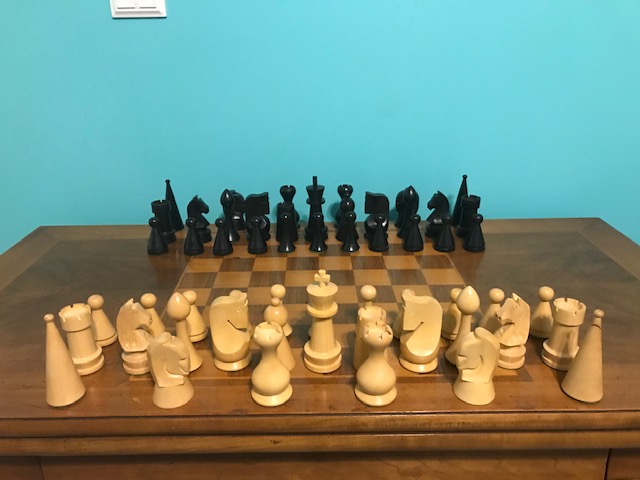
Tamerlane Chess – Step 5
And now we have the Tamerlane Chess game set up and ready to play, and because we used sets with similar finishes, and gave some thought to how we selected the other pieces, we should be able to play with little risk of spoiling the game by misidentifying a piece.
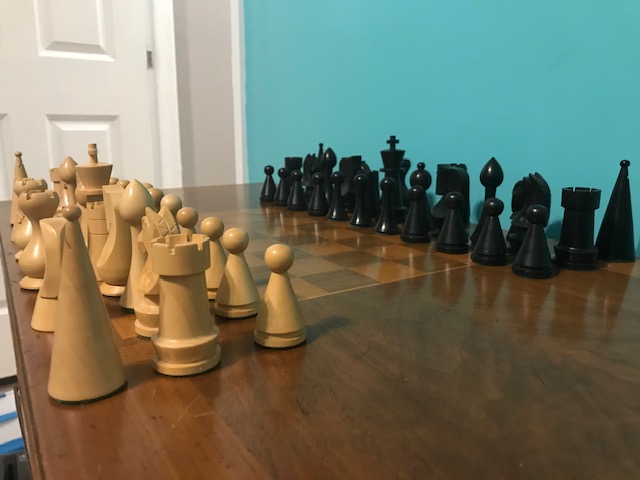
Tamerlane Chess – Ready to play!
More to Read: Chess Board and Pieces Dimensions
Also Read: 6 Tips to Choose the Best Chess Board for Your Need
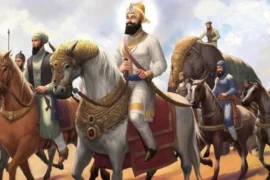
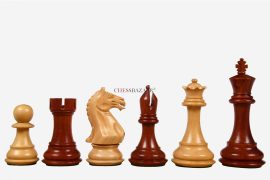
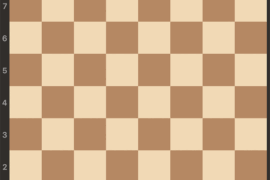
2 Comments
Looks great! But how are you dealing with the fact that each pawn is linked to one of the other pieces (pawn of rooks, pawn of giraffes, etc). This becomes important in pawn promotion. By the way, intend to make a set and board for Tamerlane chess myself in the near future.
For the purpose of this essay, I ignored that wrinkle in the rules. You’ve hit on exactly the reason I became a woodturner! In real-life play, I’d put each pawn on a slip of paper identifying its type, but if and when I finally execute my design, each pawn will be a quarter-sized version of its related piece.